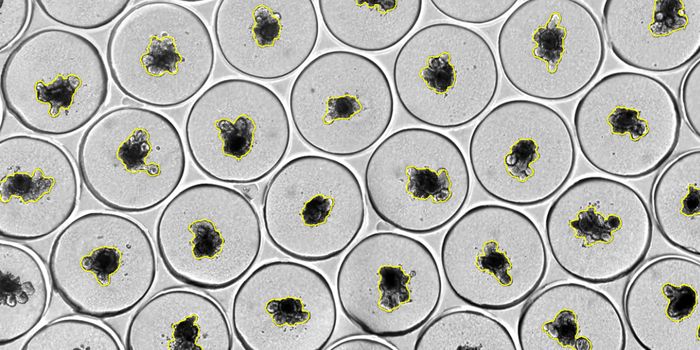Astrocytes are Star Players in the Brain
The actions of neurons enable us to think and move. Neurons signal to one another where they meet at synapses, and at chemical synapses, neurotransmitters that are released there can have excitatory or inhibitory effects on other cells. In the brain, there are cells other than neurons, however, and scientists have been trying to learn more about these other cell types.

Astrocytes are named for their star-like shape, and they are a type of glial cell that helps create a supportive framework for the brain. Once thought to be involved in the regulation of excitatory synapses, researchers have now determined that astrocytes also help control inhibitory synapses. They do so by attaching to neurons using a sticky molecule called NrCAM. Astrocytes can extend projections to inhibitory synapses, and when they connect, NrCAM adheres them together. The findings have been reported in Nature.
"We really discovered that the astrocytes are the conductors that orchestrate the notes that make up the music of the brain," said senior study author Scott Soderling, Ph.D., chair of the Department of Cell Biology in the School of Medicine at Duke University.
Excitatory and inhibitory synapses were thought to be one of the most critical parts of the brain, and they have been implicated in disease. For example, if there is too much excitation among the brain’s neurons, epilepsy may develop, while in schizophrenia, it seems there isn't enough excitation and neurons are overly inhibited. Researchers have also found that in autism, there is an imbalance between excitation and inhibition.
This work suggests that astrocytes may be playing a far more siginifcant role in the function of the brain than we knew. Astrocytes seem to be directing the action in the brain, and may make attractive therapeutic targets, noted study co-senior author Cagla Eroglu, Ph.D., an astrocyte expert and associate professor of cell biology and neurobiology in the Duke School of Medicine. In 2017, Eroglu’s lab discovered how astrocytes extend their tentacles and link to synapses.
"A lot of the time, studies that investigate molecular aspects of brain development and disease study gene function or molecular function in neurons, or they only consider neurons to be the primary cells that are affected," said Eroglu. "However, here we were able to show that by simply changing the interaction between astrocytes and neurons -- specifically by manipulating the astrocytes -- we were able to dramatically alter the wiring of the neurons as well."
Soderling and Eroglu decided to use a technique developed by Soderling's lab and refined by lead study author and Soderling lab postdoctoral associate Tetsuya Takano. The method enabled the researchers to expose mouse brains to an enzyme that would label the proteins linking neurons and astrocytes. After they were marked with this label, the investigators could isolate the tagged proteins from the brain tissue. Thus, they found NrCAM was the adhesion molecule.
Additional work confirmed that NrCAM connects astrocytes to inhibitory synapses, and controls how they are influenced.
"We were very lucky that we had really cooperative team members," said Eroglu. "They worked very hard and they were open to crazy ideas. I would call this a crazy idea."
Sources: AAAS/Eurekalert! via Duke University, Nature








